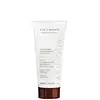What's inside
What's inside
 Key Ingredients
Key Ingredients

 Benefits
Benefits

 Concerns
Concerns

 Ingredients Side-by-side
Ingredients Side-by-side

Aloe Barbadensis Leaf Water
MaskingGlycerin
HumectantCetearyl Alcohol
EmollientDihydroxyacetone
Skin ConditioningCetyl Alcohol
EmollientGlyceryl Stearate
EmollientCeteareth-20
CleansingDimethicone
EmollientSaccharide Isomerate
HumectantButyrospermum Parkii Butter
Skin ConditioningSclerocarya Birrea Seed Oil
HumectantGlycyrrhiza Glabra Root Extract
BleachingRubus Idaeus Extract
Skin ProtectingPunica Granatum Extract
AstringentGinkgo Biloba Leaf Extract
Skin ConditioningCucumis Sativus Extract
Skin ConditioningHamamelis Virginiana Extract
AntiseborrhoeicFucus Vesiculosus Extract
EmollientCarica Papaya Fruit Extract
Skin ConditioningVitis Vinifera Juice Extract
AntioxidantCucumis Melo Fruit Extract
Skin ConditioningPropylene Glycol
HumectantTocopheryl Acetate
AntioxidantPanthenol
Skin ConditioningHydrolyzed Silk
HumectantSodium Citrate
BufferingCitric Acid
BufferingHyaluronic Acid
HumectantPhenoxyethanol
PreservativeEthylhexylglycerin
Skin ConditioningDisodium EDTA
Aloe Barbadensis Leaf Water, Glycerin, Cetearyl Alcohol, Dihydroxyacetone, Cetyl Alcohol, Glyceryl Stearate, Ceteareth-20, Dimethicone, Saccharide Isomerate, Butyrospermum Parkii Butter, Sclerocarya Birrea Seed Oil, Glycyrrhiza Glabra Root Extract, Rubus Idaeus Extract, Punica Granatum Extract, Ginkgo Biloba Leaf Extract, Cucumis Sativus Extract, Hamamelis Virginiana Extract, Fucus Vesiculosus Extract, Carica Papaya Fruit Extract, Vitis Vinifera Juice Extract, Cucumis Melo Fruit Extract, Propylene Glycol, Tocopheryl Acetate, Panthenol, Hydrolyzed Silk, Sodium Citrate, Citric Acid, Hyaluronic Acid, Phenoxyethanol, Ethylhexylglycerin, Disodium EDTA
Water
Skin ConditioningCyclopentasiloxane
EmollientDimethicone
EmollientCetearyl Alcohol
EmollientButylene Glycol
HumectantCaprylic/Capric Triglyceride
MaskingSodium Acrylate/Sodium Acryloyldimethyl Taurate Copolymer
Emulsion StabilisingSodium Hyaluronate
HumectantChondrus Crispus Extract
Skin ConditioningCodium Tomentosum Extract
Skin ProtectingHydrolyzed Collagen
EmollientIsohexadecane
EmollientGlyceryl Behenate
EmollientDimethicone Crosspolymer-3
Skin ConditioningCeteareth-20
CleansingXanthan Gum
EmulsifyingPolysorbate 80
EmulsifyingPhenoxyethanol
PreservativeEthylhexylglycerin
Skin ConditioningWater, Cyclopentasiloxane, Dimethicone, Cetearyl Alcohol, Butylene Glycol, Caprylic/Capric Triglyceride, Sodium Acrylate/Sodium Acryloyldimethyl Taurate Copolymer, Sodium Hyaluronate, Chondrus Crispus Extract, Codium Tomentosum Extract, Hydrolyzed Collagen, Isohexadecane, Glyceryl Behenate, Dimethicone Crosspolymer-3, Ceteareth-20, Xanthan Gum, Polysorbate 80, Phenoxyethanol, Ethylhexylglycerin
Ingredients Explained
These ingredients are found in both products.
Ingredients higher up in an ingredient list are typically present in a larger amount.
Ceteareth-20 is an emulsifier and cleansing agent. It is derived from cetearyl alcohol, a fatty alcohol.
As an emulsifier, Ceteareth-20 prevents oil and water from separating. It is also a surfactant. Surfactants help gather oil, pollution, and dirt to be washed away.
Cetearyl alcohol is a mixture of two fatty alcohols: cetyl alcohol and stearyl alcohol. It is mainly used as an emulsifier. Emulsifiers help prevent the separation of oils and products. Due to its composition, it can also be used to thicken a product or help create foam.
Cetearyl alcohol is an emollient. Emollients help soothe and hydrate the skin by trapping moisture.
Studies show Cetearyl alcohol is non-toxic and non-irritating. The FDA allows products labeled "alcohol-free" to have fatty alcohols.
This ingredient is usually derived from plant oils such as palm, vegetable, or coconut oils. There is debate on whether this ingredient will cause acne.
Due to the fatty acid base, this ingredient may not be Malassezia folliculitis safe.
Learn more about Cetearyl AlcoholDimethicone is a type of synthetic silicone created from natural materials such as quartz.
What it does:
Dimethicone comes in different viscosities:
Depending on the viscosity, dimethicone has different properties.
Ingredients lists don't always show which type is used, so we recommend reaching out to the brand if you have questions about the viscosity.
This ingredient is unlikely to cause irritation because it does not get absorbed into skin. However, people with silicone allergies should be careful about using this ingredient.
Note: Dimethicone may contribute to pilling. This is because it is not oil or water soluble, so pilling may occur when layered with products. When mixed with heavy oils in a formula, the outcome is also quite greasy.
Learn more about DimethiconeEthylhexylglycerin (we can't pronounce this either) is commonly used as a preservative and skin softener. It is derived from glyceryl.
You might see Ethylhexylglycerin often paired with other preservatives such as phenoxyethanol. Ethylhexylglycerin has been found to increase the effectiveness of these other preservatives.
Phenoxyethanol is a preservative that has germicide, antimicrobial, and aromatic properties. Studies show that phenoxyethanol can prevent microbial growth. By itself, it has a scent that is similar to that of a rose.
It's often used in formulations along with Caprylyl Glycol to preserve the shelf life of products.